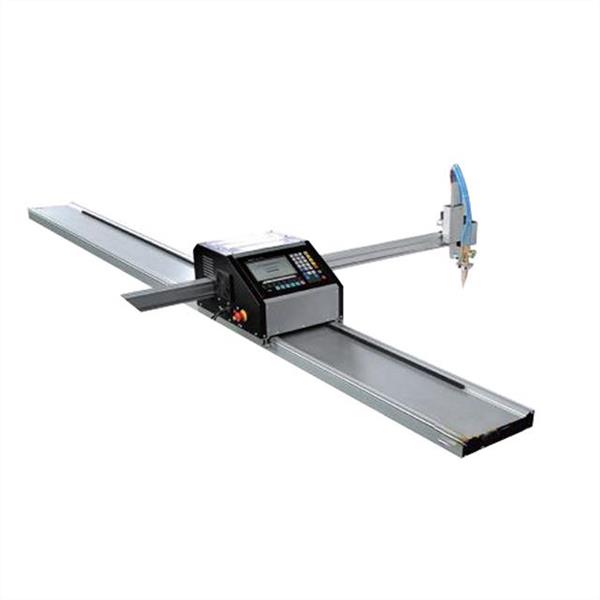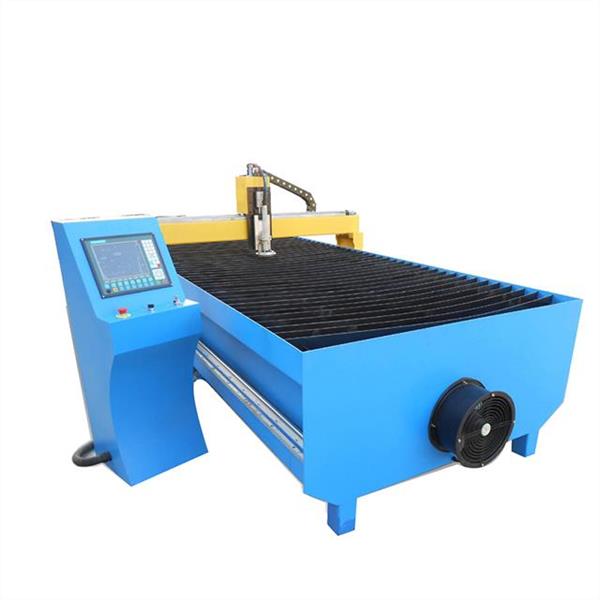News
Selecting Gas for CNC Plasma Cutting
CNC plasma cutting machines are widely used for precise and efficient cutting of various metals. The type of gas used plays a critical role in the performance, speed, and quality of the cutting process. The selection of the right gas depends on several factors, such as material type, cutting thickness, and the desired cutting quality. In this article, we will explore the different gases used in plasma cutting, their advantages, and how they affect the overall performance of the cutting machine.
CNC plasma cutting machines typically require gases with higher no-load and working voltages. Gases with high ionization energy, such as nitrogen, hydrogen, or air, increase the voltage required to stabilize the plasma arc. This increase in voltage results in a rise in arc enthalpy, which improves cutting ability. When the gas flow rate is increased, along with a reduction in jet diameter, the plasma arc becomes more focused, resulting in faster cutting speeds and improved cutting quality. Hydrogen is often used as an auxiliary gas mixed with other gases to boost cutting performance. A common mix is H35, which consists of 35% hydrogen and the rest argon. Hydrogen significantly increases the arc voltage, making the plasma jet’s enthalpy higher, and therefore, the cutting ability is greatly enhanced when combined with argon. Oxygen is another commonly used gas, especially for cutting low-carbon steel. The high-temperature, high-energy plasma arc generated by oxygen allows for faster cutting speeds. However, when using oxygen, it is crucial to use electrodes that are resistant to high-temperature oxidation to protect them from wear and extend their lifespan. Air, a more economical choice, contains about 78% nitrogen and 21% oxygen. The presence of oxygen accelerates cutting speed for low-carbon steel. However, cutting with air alone can lead to problems such as slag formation, oxidation, and increased nitrogen content, which can negatively affect cutting quality. Additionally, the lifespan of the electrode and nozzle may decrease when using air, impacting both work efficiency and cost.
While nitrogen is another popular gas for plasma cutting, it is often preferred for its stability under high power supply voltages. Nitrogen plasma arcs are more stable and have higher jet energy than argon, making them ideal for cutting materials such as stainless steel and nickel-based alloys. When used in high-speed cutting, nitrogen helps minimize the formation of dross at the cut’s bottom edge. Argon is less reactive with metals at high temperatures, making it suitable for stable plasma cutting operations. It extends the lifespan of electrodes and nozzles. However, argon plasma arcs have lower voltage and enthalpy, limiting cutting capacity. When compared to air, cutting thickness is reduced by approximately 25%, and there is a tendency for more dross formation due to higher surface tension in the molten metal. When selecting the right gas, it is important to consider the material type, thickness, and the desired cutting speed and quality. For example, for high-speed cutting of carbon steel, air or nitrogen is a common choice, while oxygen is better suited for cutting low-carbon steel. Hydrogen, when used as a mixed gas, enhances the cutting power, especially for thick materials or high-performance cutting requirements.
The choice of gas used in CNC plasma cutting directly impacts the efficiency, speed, and quality of the cutting process. Selecting the appropriate gas helps to achieve optimal cutting performance while minimizing slag, oxidation, and dross. By understanding the characteristics and effects of each gas, operators can make informed decisions to enhance cutting productivity and reduce costs. When using CNC plasma cutting machines, it is essential to pair the correct gas with the material and cutting specifications. Whether using oxygen, nitrogen, hydrogen, or air, understanding their roles and selecting the right combination can significantly improve cutting outcomes.
CATEGORIES
News
Contact Us
Tel:0086-13394110095
Fax:0086-411-39015062
Phone:0086-13394110095
Email:liu@weldcnc.com
Add:20# Ganwan Street, Zhongshan District, Dalian City, China

